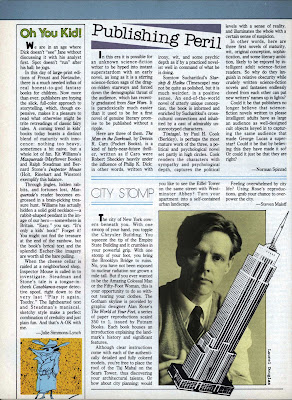Book Review: 'Rolling Hot' by David Drake
3 / 5 Stars
'Rolling Hot (280 pp.) was published by Baen Books in September 1989; the cover art is by Paul Alexander.
This is an entry in Drake's 'Hammer's Slammers' franchise, about a mercenary outfit that roams the galaxy, intervening in various planetary conflicts......for the right price, of course.
Throughout the 'Slammers' series, the hiring governments, and their armed forces, are almost always incompetent, if not hopelessly inept. This is true of the planet Prosperity, whose National Government has hired the Slammers as part of an effort to quash a long-running civil war with the World Government, aka The Conservatives.
This iteration of the series centers on a detachment of the Slammers led by Captain June Ransom; as the novel begins, they are bivouacked in a seemingly safe area, away from the front, enjoying a badly-needed respite from the fighting.
However, the Slammer's R & R is rudely interrupted by an attack by enemy saboteurs.
Once the mess gets cleared up, Captain Ransom is given an order by Alois Hammer himself: she and her detachment of three tanks and five APCs are to immediately set off cross-country to the city of Kohang, which is about to fall to a surrounding force of Conservative troops.
If Kohang falls, so does the National Government, and if the National Government falls, then the Hammer's Slammer's don't get paid.
June Ransom and her team realize that it's a suicide mission, but orders are orders. So they roll out, on their way across 300 miles of terrain filled with hostile enemies. But sometimes, friendly fire can do as much damage as the people on the opposite side....
'Rolling Hot' adheres closely to author Drake's brand of military SF. The narrative moves along at a fast clip; death comes frequently and without rhyme or reason; one relies on one's buddies to survive the snafus and mischance that comes with combat.
Drake's writing about armored vehicles has a realism that comes from his time served in Viet Nam as a member of the 11th Armored Cavalry. That said, at times the narrative becomes overly preoccupied with the technical nuances of the operation and maintenance of the Slammer's ground-effect tanks and APCs, and my eyes began to glaze.
The combat scenes are well-written, and (with the exception of Alois Hammer, of course) all characters are expendable, so you never know who is going to 'buy it' when the action heats up.
Readers who are not fans of military SF will probably not need to seek out 'Rolling', but fans of the genre, and the 'Slammers' in particular, will find it rewarding.










































































